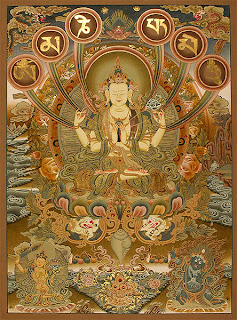1. The first stage is called in Sanskrit Pramudita, or Very Happy. Bhumi means stage or ground. From the position of Bodhisattva to become a Buddha, one must go through the ten Bhumis, the ten stages or stations. The first is called the Very Happy station because in this first stage the Bodhisattva has recognized the Sunyata not only by thinking or just by visualization, but he has exactly and truly realized the Sunyata. Because he recognized the Sunyata, he is in another world, a world of Sunyata, not a world of ignorance or selfishness. So he feels very happy, and feels joy at having overcome the former difficulties. So it is called the Very Happy Station.
2. The second bhumi is Vimala or Renounce the Defilement because as a Bodhisattva he knows how to get the Sunyata and abide in the Sunyata more and more. Within the Sunyata he knows everything is pure, while outside everything is defiled. Actually it may seem that the Renounce the Defilement stage should be even before the first bhumi, but here Renounce the Defilement means the very subtle, not the gross one. So the second bhumi is the stage of purity when the Bodhisattva experiences freedom from all possible defilement.
3. The third bhumi is called Prabhakari or Shines Light Stage because as the Bodhisattva's meditation goes deep, his Samadhi shines light, so this is called the Shines Light or Enlightened Stage or Eminate Stage because a lot of light shines out from his Samadhi.
4. The fourth bhumi is Arcismati or Burning Wisdom. The Bodhisattva has burned up all sorrows in the fire of wisdom so this is called the burning or glowing wisdom stage.



